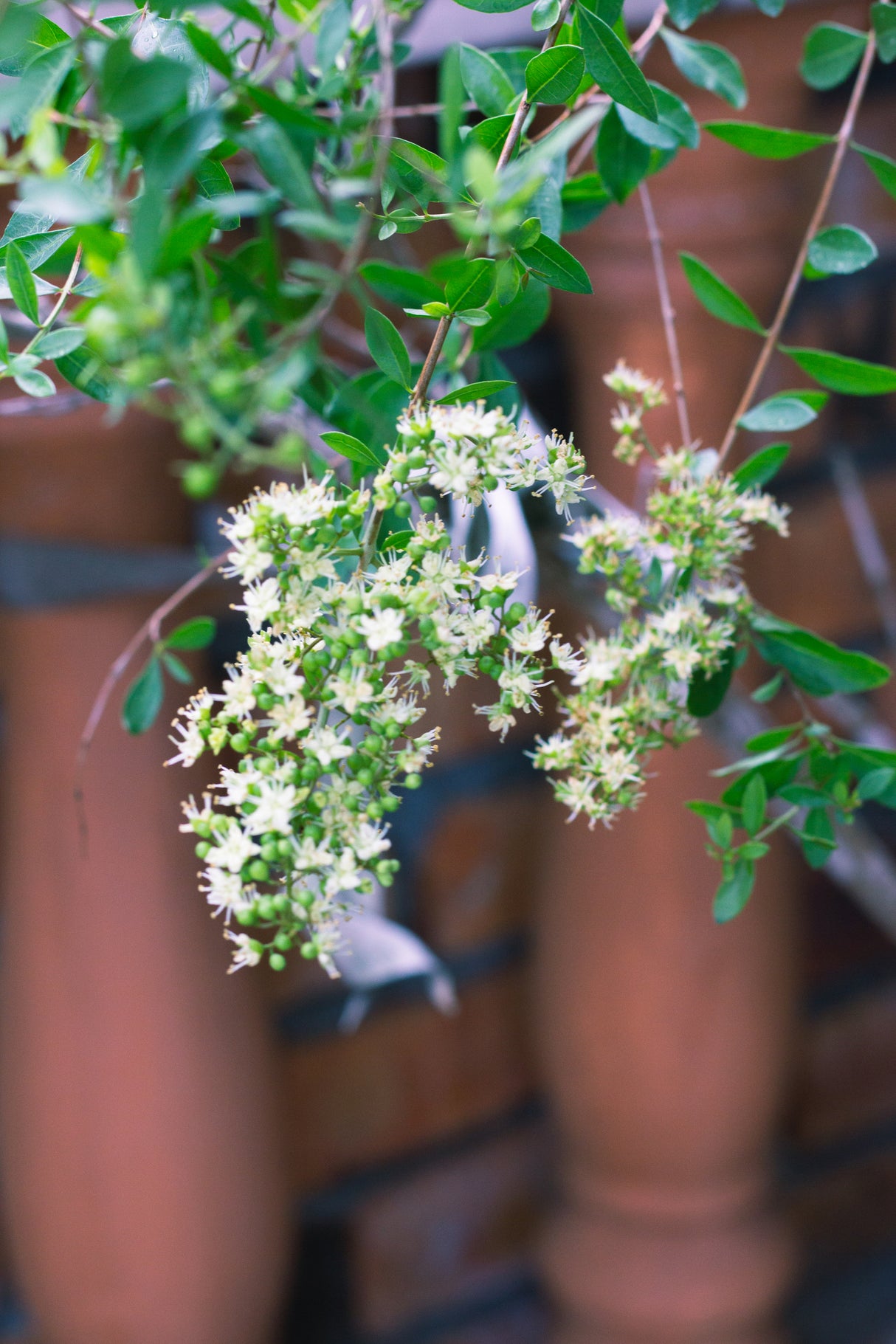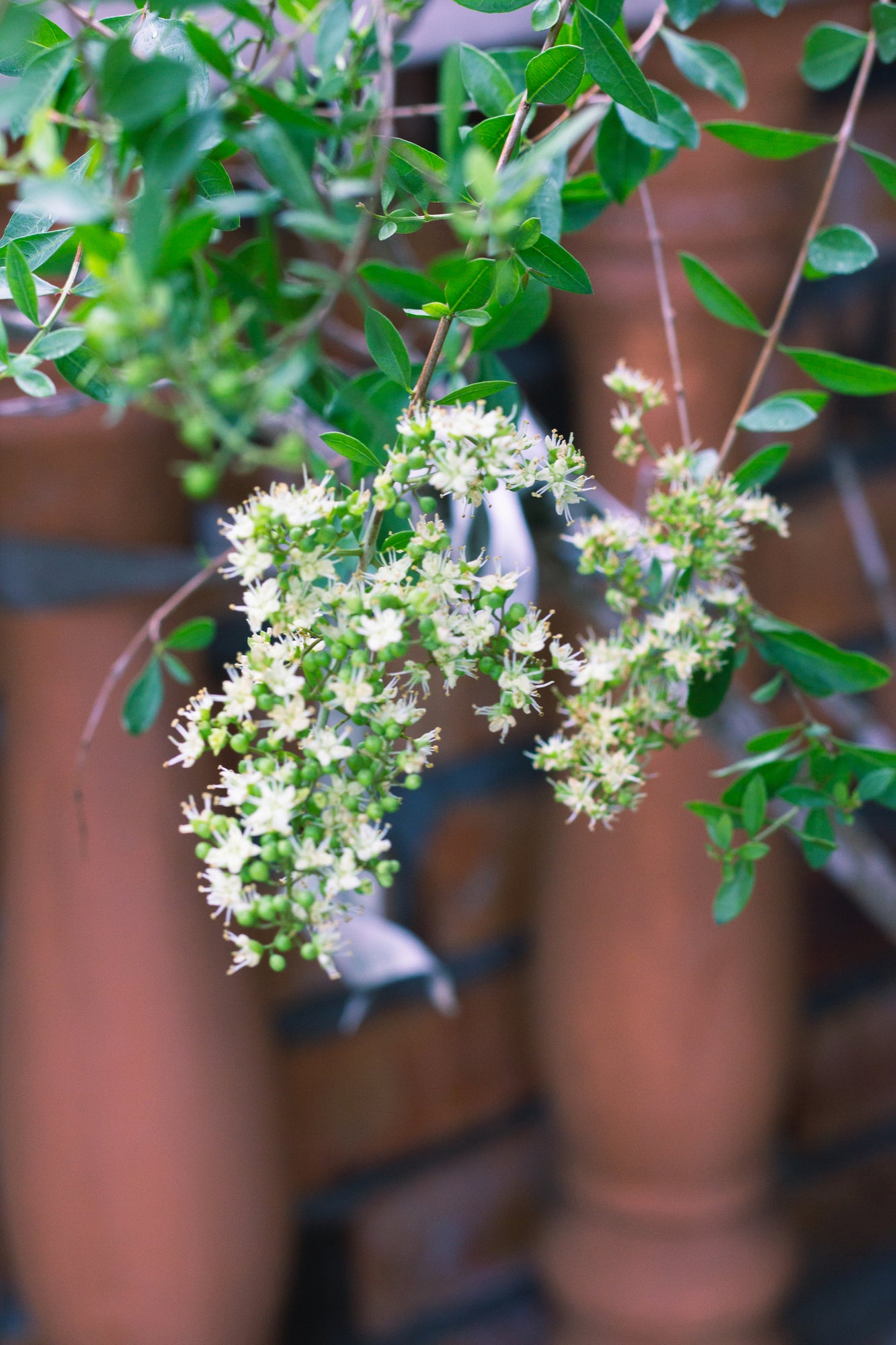Description
Description
The Lawsonia inermis, commonly known as the Henna Plant, is a small, deciduous shrub or small tree native to northern Africa, the Middle East, and South Asia. It is renowned for its fragrant white to pale yellow flowers and its leaves, which are ground to produce henna dye, widely used in traditional body art and hair coloring. Growing up to 2–6 meters tall, this hardy plant thrives in arid and semi-arid conditions, making it a popular choice for ornamental planting, hedging, and cultural uses.
Specifications:
- Height: 2–6 meters
- Width: 1–3 meters
- Native to: Northern Africa, Middle East, South Asia
- Foliage: Small, oval green leaves; deciduous in cold climates
- Growth rate: Moderate
Conditions:
- Soil: Prefers well-drained sandy or loamy soils; tolerates poor, rocky, and saline soils
- Light: Full sun
- Water: Low; drought-tolerant once established
- Climate: Thrives in arid, semi-arid, and tropical regions
Additional Features:
- Flowers: Fragrant, small white to pale yellow flowers bloom in clusters during summer
- Uses: Ideal for hedging, ornamental planting, and dye production
- Spacing: Plant 1–2 meters apart for hedging or 3–5 meters for individual displays
- Low Maintenance: Requires minimal care; prune to maintain shape or harvest leaves
- Pest Resistance: Naturally resilient; monitor for common pests in stressed conditions
- Dye Production: Leaves are dried and ground into powder to produce henna dye for body art and hair coloring
- Wildlife Attraction: Flowers attract bees and other pollinators
- Cultural Significance: Revered in many cultures for its role in traditional ceremonies, medicine, and cosmetics
The Henna Plant is a resilient and multifunctional shrub, perfect for enhancing arid landscapes with its fragrant flowers, practical uses, and cultural significance. Its adaptability makes it a valuable addition to gardens in hot and dry climates.
Delivery Information
Delivery Information
We offer flexible delivery options to ensure your tree arrives in perfect condition, whether you're located nearby or on the other side of the world.
- Domestic Deliveries:
We provide reliable delivery services across the country, utilizing our fleet of specialized trucks and train freight networks. Whether you're in a metropolitan area or a remote location, we ensure your trees arrive safely and efficiently. - International Deliveries:
For our global customers, we coordinate delivery via sea freight. With 30+ years of exporting experience, every tree is carefully prepared to meet international biosecurity standards and packaged for safe transport to its destination.
Our team will work closely with you to arrange the most suitable delivery method based on your location, project timeline, and tree size. No matter where you are, we ensure a seamless delivery experience.
Have additional questions? Contact us to discuss your specific delivery requirements!
FAQ's
FAQ's
How are ex-ground trees prepared for delivery?
All ex-ground trees are carefully dug with their rootball intact to preserve the root system and minimize transplant shock. Each tree is stabilized and treated with specialized solutions to promote health during transit. The rootball is wrapped to retain moisture and protect it from damage, and water crystals are added to provide essential nutrients and hydration for the journey. These meticulous preparations ensure your tree remains healthy and ready for planting, whether it’s traveling across the country or overseas.
How long does delivery take?
Delivery times vary depending on your location and the size of your order. Domestic deliveries typically take 1–2 weeks, while international shipping may take several weeks depending on the destination. Contact us for specific timelines.
Are there minimum order quantities for delivery?
For local and nationwide orders, there are no strict minimums, though delivery costs may vary based on order size. For international orders, a minimum quantity is often required to optimize freight efficiency. Contact us to discuss your needs.
Do you provide installation services?
While we focus on the supply and delivery of trees, we can connect you with trusted landscaping partners who specialize in tree installation and site preparation.
Can I visit your farms to select trees?
Yes, we welcome visits to our farms by appointment. Seeing the trees in person allows you to select the perfect specimens for your project. Contact us to schedule a visit.



 Inspection available upon request
Inspection available upon request
 Photos are of example stock
Photos are of example stock
 International Delivery Available
International Delivery Available
 Available For Export
Available For Export
